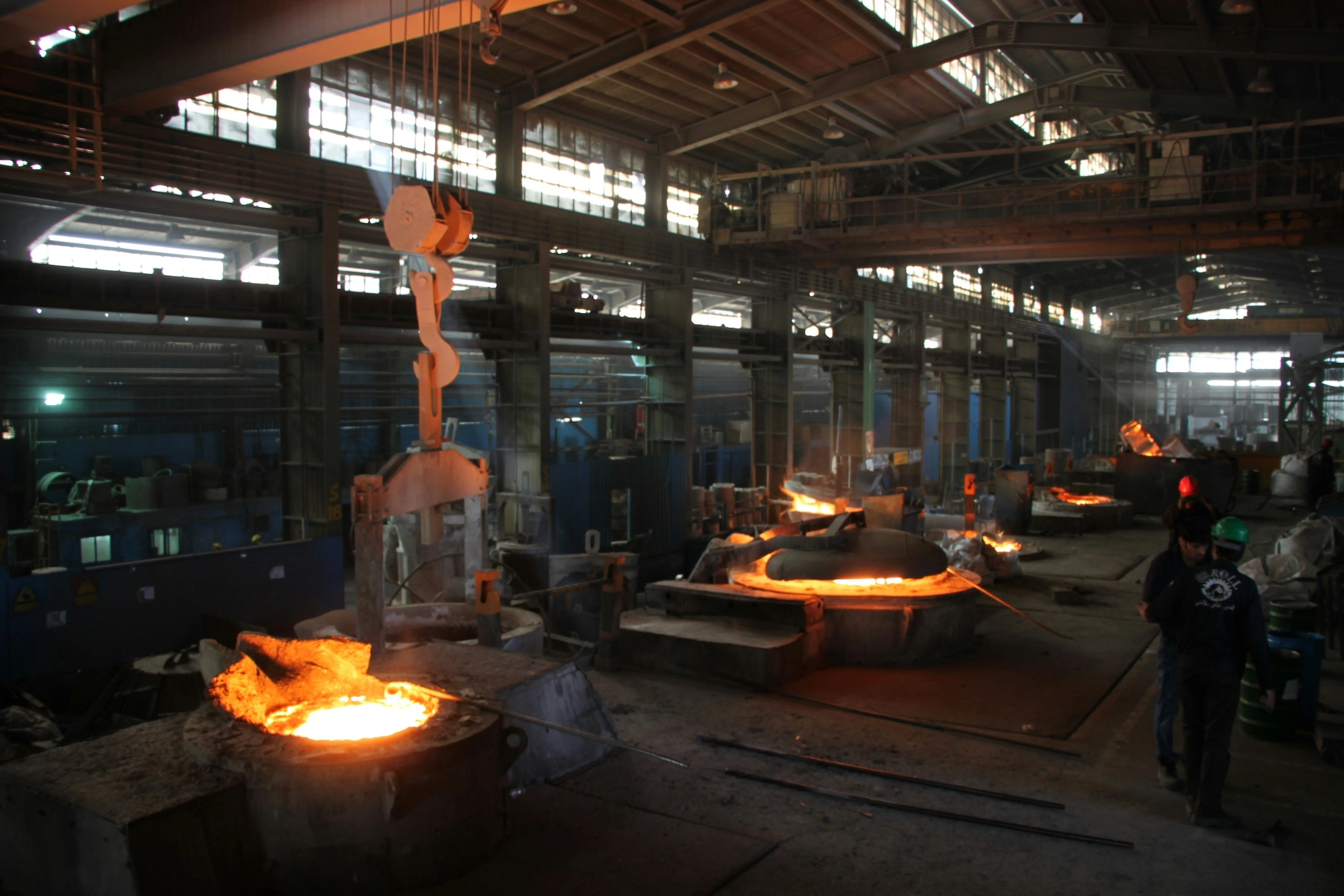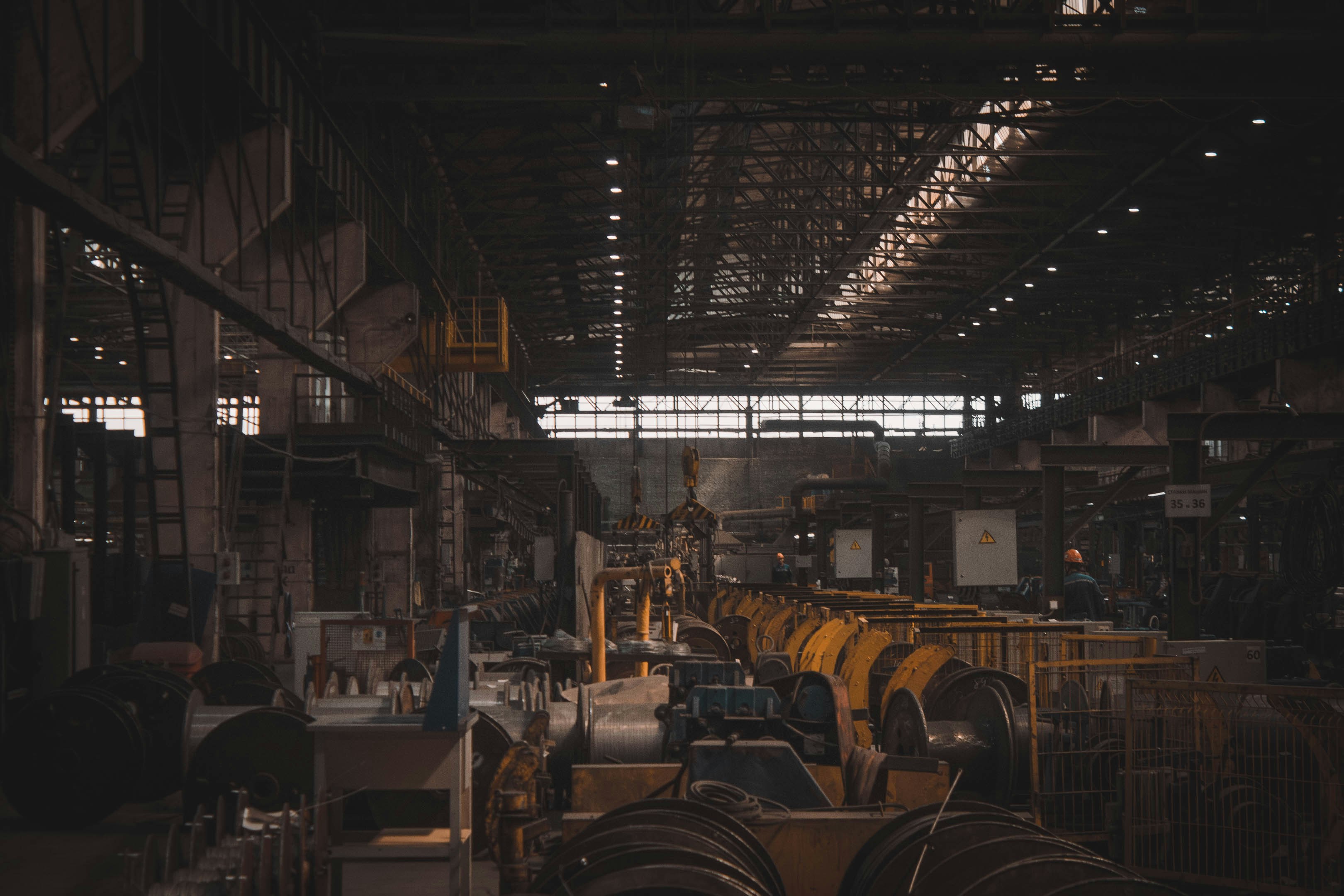Image provided by Shavr IK via Unsplash.
TL;DR: Industrial processes such as metal production, mineral product manufacturing, and wood processing release coarse particulate matter (PM10) that can harm both workers and surrounding communities. Monitoring and managing these emissions helps reduce respiratory illness, protect environmental health, and ensure cleaner industrial operations.
Industrial facilities often produce air pollutants, which harm both the environment and public health. In the United States, communities surrounding industrial facilities are disproportionately made up of people of color and low-income areas. People in these communities often face higher levels of cancer, threatening their health and impairing their quality of life.
Industrial applications emit many different kinds of air pollutants, including sulfur dioxide, nitrogen dioxide, carcinogens, and acid gases. However, they also produce both fine and coarse particulate matter, which can have far-reaching consequences.
What is particulate matter?
Particulate matter refers to any solid or liquid particles suspended in the air. They are not comprised of any one substance, but can include a variety of substances. Particulates can also differ in size.
While there are many different classifications of particulate matter, PM2.5 and PM10 are some of the most common classifications. PM2.5 refers to particulate matter with a diameter of 2.5 μm or smaller. PM10 refers to particulate matter with a diameter of 10 μm or smaller. PM10 includes dust particles.

The health effects of dust (PM10)
Both PM2.5 and PM10 can lead to health problems. In fact, the small size of PM2.5 allows it to enter deeper into the lungs, while PM10 is more likely to deposit in the lung’s upper regions. However, PM10 can result in tissue damage, lung inflammation, reduced lung function, worsening of asthma, increased hospitalization, faster disease progression, and reduced life expectancy.
PM10 comes from a variety of sources, including vehicles, soil, and household combustion. A study in Peshawar, Pakistan, found that industrial emissions and metallurgical industries contributed roughly 33.3% of total PM10 emissions, with the metallurgical industry making up a substantial part of that percentage. Dust emissions can pose a health threat to both industry workers and the surrounding areas where PM10 may spread.
The metallurgical industry
Dust can come from many different industries, including, but not limited to, the metallurgical industry, the mineral products industry, and the wood products industry. The metallurgical industry refers to the production of metal from ore and the production of alloys from ingots. It also refers to the recovery of metal from scrap and salvage. It includes steelmaking and ironmaking. This industry often requires large amounts of fuel and heat.

Iron and steelmaking can even result in dust containing heavy metals, which can be particularly harmful to inhale. A study conducted on the metal particulate matter pollution near iron and steel-making industrial areas in China found particles of arsenic, lead, and other airborne metals in the area. Steelmaking can also result in dust containing cadmium, zinc, chromium, and mercury.
Over time, such metal-bearing particulate matter can also settle on soil and water surfaces, contributing to environmental contamination and posing extra risks to nearby communities. Although these cases are rare, lead, mercury, arsenic, and cadmium can all lead to heavy metal poisoning when ingested or inhaled at high enough doses.
The mineral products industry
The manufacturing of nonmetallic mineral products includes the clay, concrete, stone, and glass products sectors. It includes the manufacturing of cement, asbestos, bricks, and gypsum products. This industry is necessary to the creation of most buildings and many essential items.

The mineral products industry emits dust, a form of particulate matter air pollution. PM10 emissions can come from the extraction, processing, transport, and storage of the mineral materials. Emissions can even come from handling finished products, which can be dry and fine, allowing dust particles to easily come loose. Mineral products dust air pollution is usually composed of the same materials that are being handled, and can travel beyond the boundaries of the industrial site, affecting surrounding communities.
Certain mineral product manufacturing emissions can be particularly harmful. For instance, asbestos is especially dangerous and can cause both cancer and asbestosis. Many mineral products also contain crystalline silica (also known as quartz), which is harmful when inhaled. Manufacturing processes will sometimes cut or crush silica products, creating PM10 air pollution, which can be inhaled, causing silicosis.
The wood products industry
Wood manufacturing involves the conversion of trees into consumer products or building materials such as paper, charcoal, plywood, lumber, and various kinds of boards. This process results in PM10 air pollution as wood dust breaks off from refining, chipping, flaking, sawing, and other actions taken with the wood products.

According to the International Agency for Research on Cancer, wood dust is a human carcinogen. Coarser wood dust particles tend to remain in the upper airways, including the nose, throat, and related passages, where they have been linked to nasal and sinus cancers. Finer dust, including particles in the PM10 range, can travel further into the lungs and may contribute to additional respiratory health risks.
A study observing the effects of wood dust on sawmill workers in Bangladesh found that workers exposed to the dust were more likely to experience breathlessness, sneezing, coughing, chest tightness, and itching. Wood dust exposure can result in decreased pulmonary function.
Looking forward
The US EPA has certain regulations for ambient PM10 air pollution. Proper policy, respirators, and appropriate industry practices, such as the use of water sprays, covers, windbreaks, and filters, help reduce dust emissions.

The negative health effects of dust exposure underscore the need to monitor dust near industrial applications, where PM10 emissions may be elevated. Air quality monitoring can support policy reinforcement and protect the health of both industrial workers and residents in surrounding communities. Partner with Clarity to implement an accurate, real-time air quality monitoring network.
